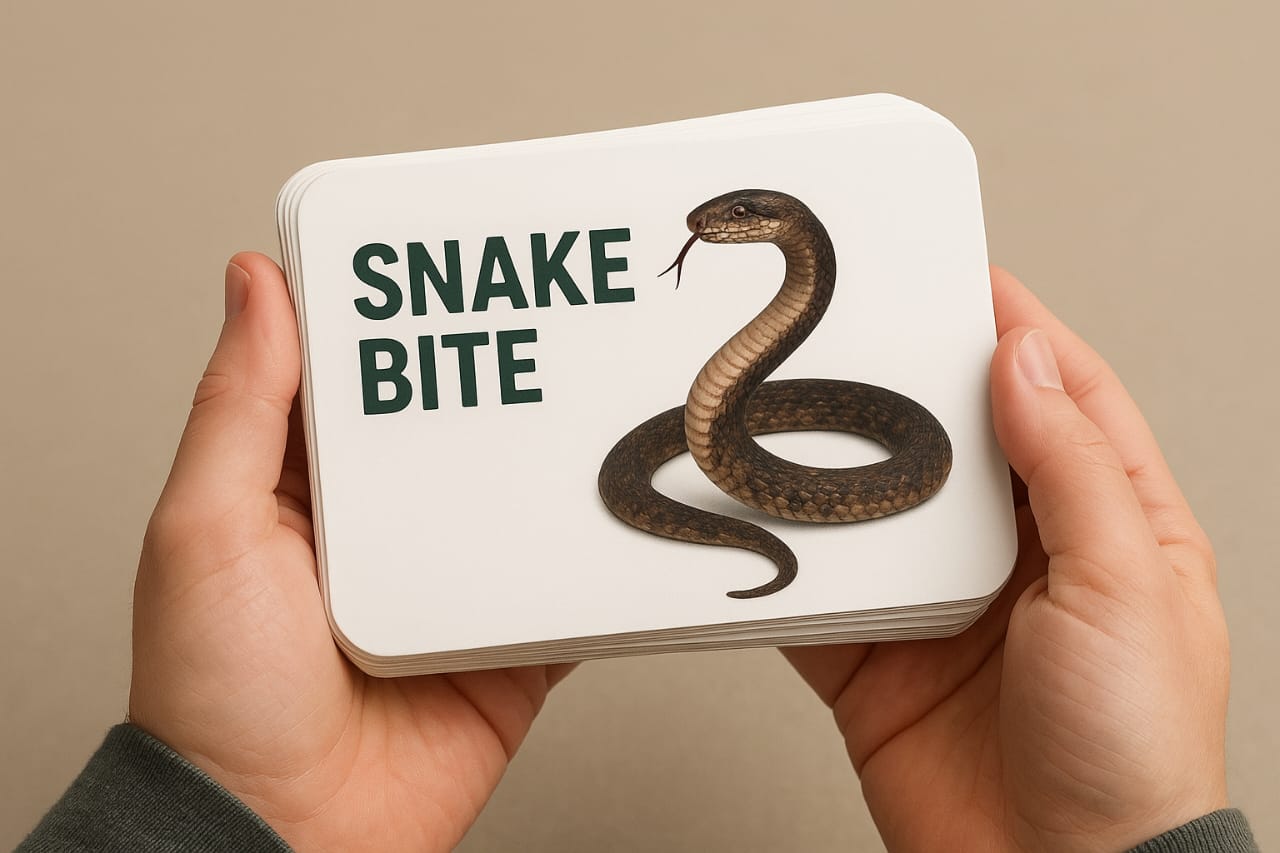What are the first three steps (ABC) in resuscitating a critically ill snakebite victim?
What key parameters should be monitored in all snakebite patients admitted for observation?
What three types of interventions should be avoided whenever possible in snakebite management?
What are some early, non-specific signs that suggest systemic envenoming?
A patient presents with neurotoxic signs (e.g., ptosis) but has no significant local swelling or coagulopathy. They were bitten at night while sleeping on the floor. What is the likely snake?
A patient has neurotoxic signs AND marked local swelling, but no coagulopathy (clotting blood). What is the likely snake?
A patient presents with a combination of neurotoxicity, coagulopathy (non-clotting blood), and marked local swelling. What is the likely snake?
A patient has coagulopathy and marked local swelling but NO neurotoxic signs. What are the two most likely snakes?
What clinical finding suggests rhabdomyolysis and is indicative of envenoming by a sea snake or Russell’s viper?
What is the bedside test used to assess for coagulopathy?
What does a ‘false negative’ (clotting) 20WBCT result mean?
When should antivenom therapy be started?
What premedication is recommended before giving antivenom?
Are antihistamines and corticosteroids recommended as premedication before antivenom?
What is the mainstay of treatment for an acute anaphylactic reaction to antivenom?
How are late reactions to antivenom (serum sickness), which occur 1-12 days after treatment, managed?
Is the antivenom dose for a child different from an adult’s?
What is a useful early sign of impending respiratory failure in small children with neurotoxic envenoming?
When is antivenom indicated for local envenoming *alone*?
What are the two primary clinical features of a cobra bite?
What is a characteristic early symptom of a Common Krait bite that can indicate the need for antivenom before paralysis starts?
Describe the progression of paralysis in a Common Krait bite.
What is the life-saving intervention for respiratory paralysis from a krait bite?
Why might paralysis persist or worsen after giving antivenom for a krait bite?
Is persistent paralysis from a krait bite an indication for more antivenom?
What are the three most common systemic effects of a Russell’s viper bite?
What is the recommended initial antivenom dose for a Russell’s viper bite?
What is the endpoint of antivenom therapy, particularly in viper bites?
Should the Indian polyvalent antivenom be used for a Hump-nosed viper bite?
What are the two most serious systemic complications of a Hump-nosed viper bite?
How long should a patient with a Hump-nosed viper bite be observed in the hospital, and why?
What is the management approach for a Hump-nosed viper bite?
What is the most common systemic manifestation of a Saw-scaled viper bite, and is antivenom effective?
What are the main clinical features of a Green pit viper bite, and how is coagulopathy managed?
What are the two distinct clinical syndromes of sea snake envenoming?
What is the management for a sea snake bite victim in Sri Lanka?





Leave a Reply